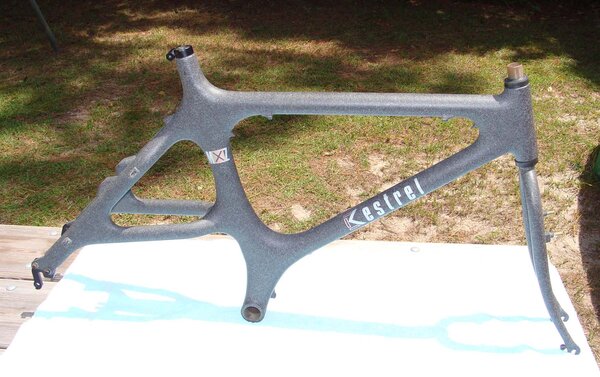Obviously in relation to bikes.
The frequent 'will they or won't they break' threads regarding Spinergy wheels has piqued my interest.
Now, from peripheral experience of composites via the military and commercial aviation industry, I know that there is nothing at all wrong with the material when used correctly in suitable applications. However, I wonder if certain cycle businesses have been market driven rather that application driven regarding the use of CF in bicycles.
It's easy to imagine marketing people seeing CF being used in civil and military aviation back in the 80s, and suggesting it as a panacea for bicycle parts. Lighter, stronger and very cool!
However... a large part of CF's strength comes from the design rather than the material itself. The Spinergy wheels, to my limited experience of CF (though 28 years of experience in military tech / engineering) just look 'wrong' in that they seem to be designed to the strengths of an alloy wheel. In other words, they don't appear to play to the strengths of CF - monocoque construction in particular, like the tri-spoke 'Spin' wheels do.
It's a bit like forming CF into tubes and bonding them together to form a conventional 'triangles' bike frame - it's treating CF like steel. It doesn't have the same properties or failure modes as steel, but in the rush to get a big glitzy CF bike into a manufacturers range of bikes and suck in the consumer, proper design and dare I say safety take a back seat to profit.
The frequent 'will they or won't they break' threads regarding Spinergy wheels has piqued my interest.
Now, from peripheral experience of composites via the military and commercial aviation industry, I know that there is nothing at all wrong with the material when used correctly in suitable applications. However, I wonder if certain cycle businesses have been market driven rather that application driven regarding the use of CF in bicycles.
It's easy to imagine marketing people seeing CF being used in civil and military aviation back in the 80s, and suggesting it as a panacea for bicycle parts. Lighter, stronger and very cool!
However... a large part of CF's strength comes from the design rather than the material itself. The Spinergy wheels, to my limited experience of CF (though 28 years of experience in military tech / engineering) just look 'wrong' in that they seem to be designed to the strengths of an alloy wheel. In other words, they don't appear to play to the strengths of CF - monocoque construction in particular, like the tri-spoke 'Spin' wheels do.
It's a bit like forming CF into tubes and bonding them together to form a conventional 'triangles' bike frame - it's treating CF like steel. It doesn't have the same properties or failure modes as steel, but in the rush to get a big glitzy CF bike into a manufacturers range of bikes and suck in the consumer, proper design and dare I say safety take a back seat to profit.
